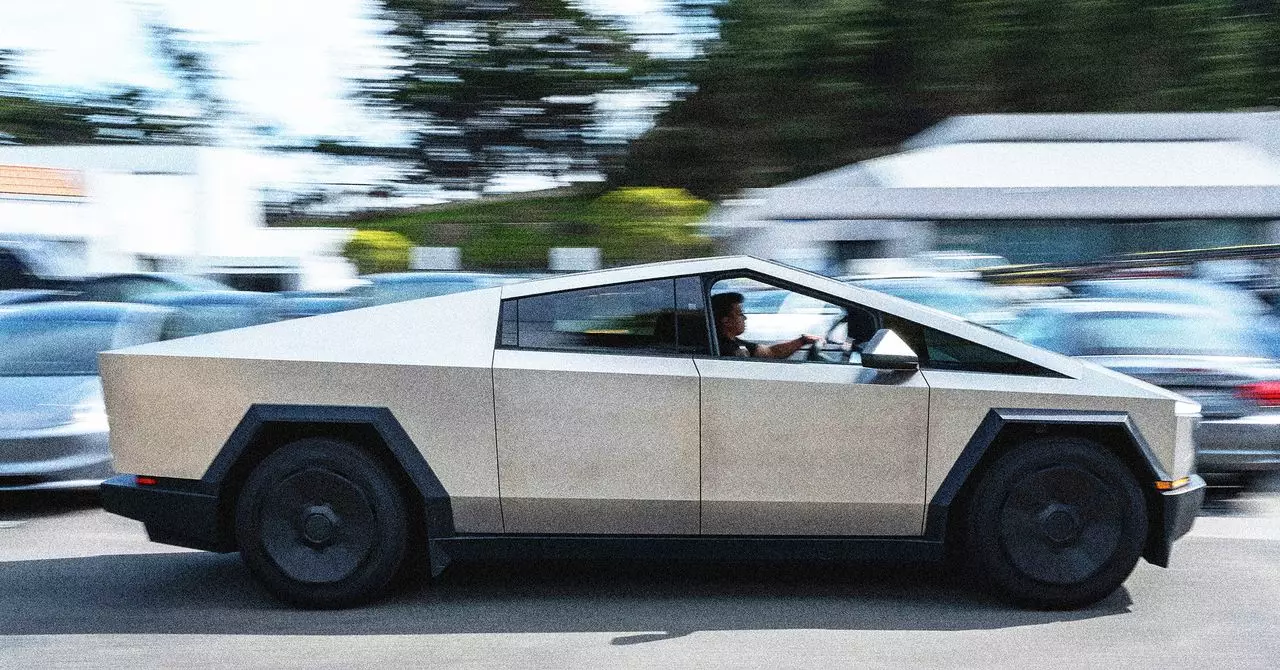Tesla’s recent decision to recall the majority of its Cybertruck production due to an adhesive-related issue raises significant questions about the intersection of innovation and safety in the automotive industry. While advancements in technology are often a hallmark of modern vehicle design, the incident underscores serious implications about the durability and reliability of new materials and methods employed in manufacturing.
The recall affects over 46,000 units produced from November 2023 to February 2025, marking the eighth time the Cybertruck has faced such action since its launch. What sets this recall apart from Tesla’s typical software-based updates is its requirement for physical repairs at service centers, indicating a tangible concern that cannot be resolved through conventional tech fixes. The problem, tied to a stainless steel trim panel, manifests not in performance but rather in cosmetic application, exposing a potential road hazard that could compromise not only the Cybertruck but also other vehicles on the road.
Cosmetics and Safety: An Unexpected Intersection
It’s fascinating to consider how what begins as a superficial issue can escalate into a matter of public safety. The trim panel—a cosmetic feature—has indeed morphed into a serious concern, as the adhesive used to bond it could weaken under certain environmental conditions. Reports surfacing on social media ignited concerns among consumers, leading to the external scrutiny that has necessitated this recall. Such failure not only undermines consumer trust but also raises questions about the vehicle’s overall design integrity and the decisions made during its engineering phase.
In a world where brand reputation heavily dictates consumer behavior, Tesla’s proactive approach to resolving this potentially hazardous glitch is commendable. Yet it invites scrutiny into whether the company is compromising safety for the sake of aesthetic innovations. The auto industry has long grappled with the balance between style and substance, but Tesla’s foray into a unique material—stainless steel—brings an entirely new dimension to this ongoing debate.
The Role of Innovative Materials
Dale Harrow, an expert in intelligent mobility design, offers critical insight into the challenges posed by using stainless steel in the Cybertruck’s exterior design. While adhesive bonding has become increasingly popular due to its efficiency and contribution to lightweight structures, the choice of materials plays an indisputable role in the effectiveness of these bonding agents. As Harrow notes, the colder temperature effects on stainless steel may have compromised the adhesive’s performance during production, leading to the current dilemma.
What we see with the Cybertruck is a perfect storm of materials science and automotive design intersecting in a way that hasn’t been fully vetted. Unlike conventional vehicles that utilize familiar metals, the application of stainless steel brings about unique challenges, especially concerning thermal conductivity and adhesive compatibility. Such an innovation should ideally come with extensive research into the material’s behavior in various conditions, especially under the stringent scrutiny of safety regulations.
Redefining the Future of Automotive Safety
The Cybertruck recall serves as an essential case study, urging the automotive industry to reevaluate how new technologies and materials are tested and validated before hitting the consumer market. In a climate where rapid innovation is often equated with success, this incident illustrates the dangers of moving too quickly. As vehicles increasingly incorporate non-traditional materials and complex designs, the emphasis on thorough testing and risk assessment must become paramount.
Ultimately, while Tesla’s recalls traditionally excite discussion around consumer loyalty and brand strength, the underlying issues present a pivotal learning opportunity. They compel manufacturers not only to focus on high-profile features but also to ensure that every aspect of vehicle design—cosmetic or otherwise—aligns with consumer safety. The stakes are high, as an appalling oversight can lead to loss of life or injury, damaging trust and the very foundation upon which companies like Tesla build their reputations.
Such a direct challenge to the tech-obsessed narrative prevalent in today’s automotive culture begs the question: How can the industry learn from such missteps while simultaneously pushing the boundaries of innovation into unexplored territories?

